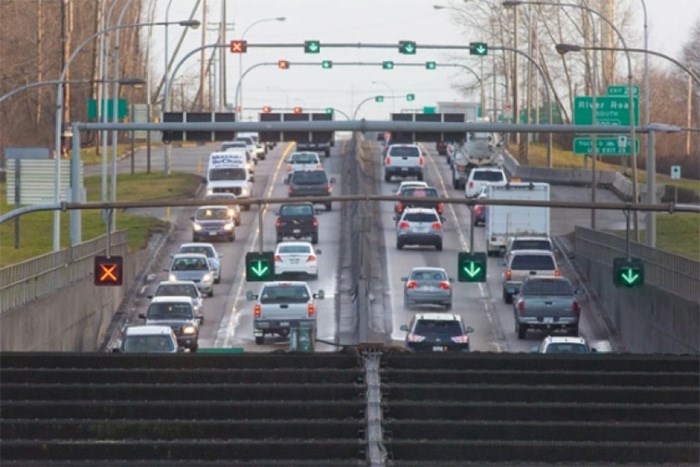Improving transit service through the George Massey Tunnel and along the Highway 99 corridor will be one of TransLink’s priorities.
Officials with the transit authority recently outlined Delta’s ridership numbers and improvement plans, including goals set out in the approved Southwest Area Transit Plan, during a workshop with Delta council.
 Opened in 1959, the George Massey Tunnel struggles to handle today’s traffic volumes. Photograph By Gord Goble
Opened in 1959, the George Massey Tunnel struggles to handle today’s traffic volumes. Photograph By Gord Goble
It was noted there are 16,160 average weekday daily boardings for buses that travel through the tunnel, which drops to 10,580 on Saturdays, and 9,470 on Sundays.
Travel times vary by 20 to 25 minutes during peak periods, negatively impacting schedule reliability and efficiency. The current priority for the corridor includes bus-only lanes, queue jumps and a signal with transit priority.
TransLink has committed to further improvements, to be rolled out in a couple of phases, which include double-decker buses on several routes, including the 620, and frequency improvements.
Longer-term improvements are under development in TranLink’s new regional transportation strategy called Transport 2050.
Meanwhile, other transit improvements in the works for Delta include a RapidBus service on Scott Road, which should be running in a couple of years.
It was noted that Scott Road is the 11th busiest bus corridor in Metro Vancouver, and the second fastest growing in the region, with over 20,000 boardings per day. Despite service improvements, it’s currently one of the most overcrowded in the system.
It was noted a trip between Scottsdale and the SkyTrain takes an average of 30 per cent longer in the afternoon than the morning, and that the same trip can take 16 minutes by car but over 25 minutes by bus.
As far as overall transit performance in Delta, there were well over 4.9 million boardings in 2018, a 16.3 per cent increase from the previous year. Overall, the Southwest transit region, which includes South Delta, Richmond and the Tsawwassen First Nation, saw a 4.9 per cent total increase.


